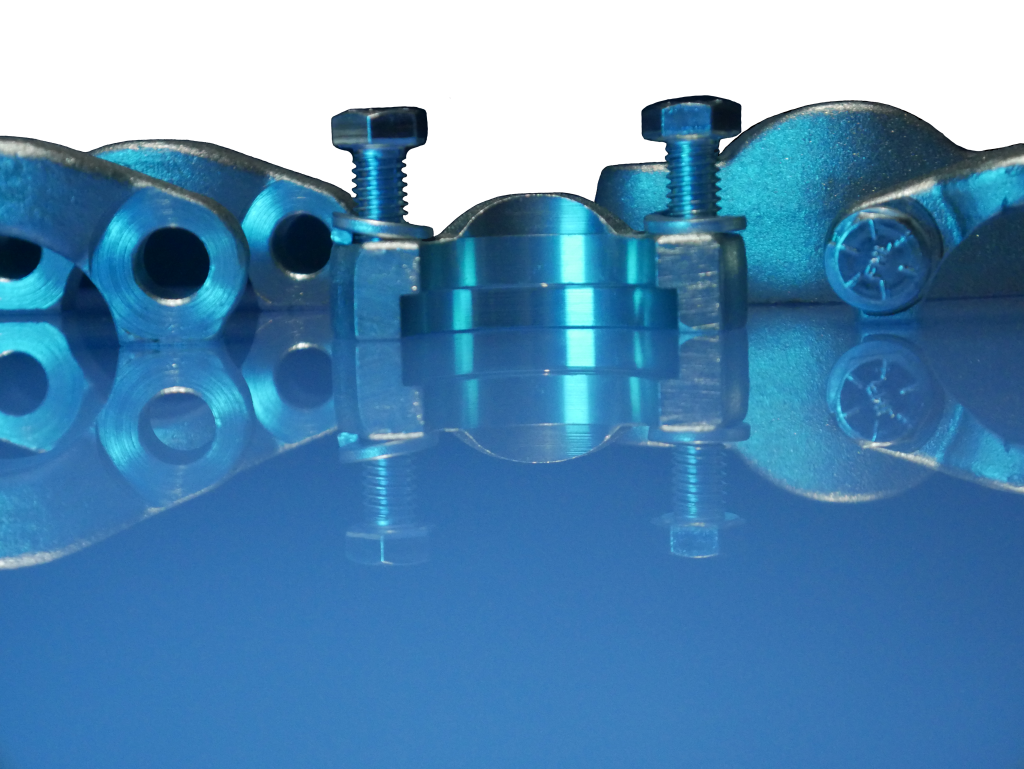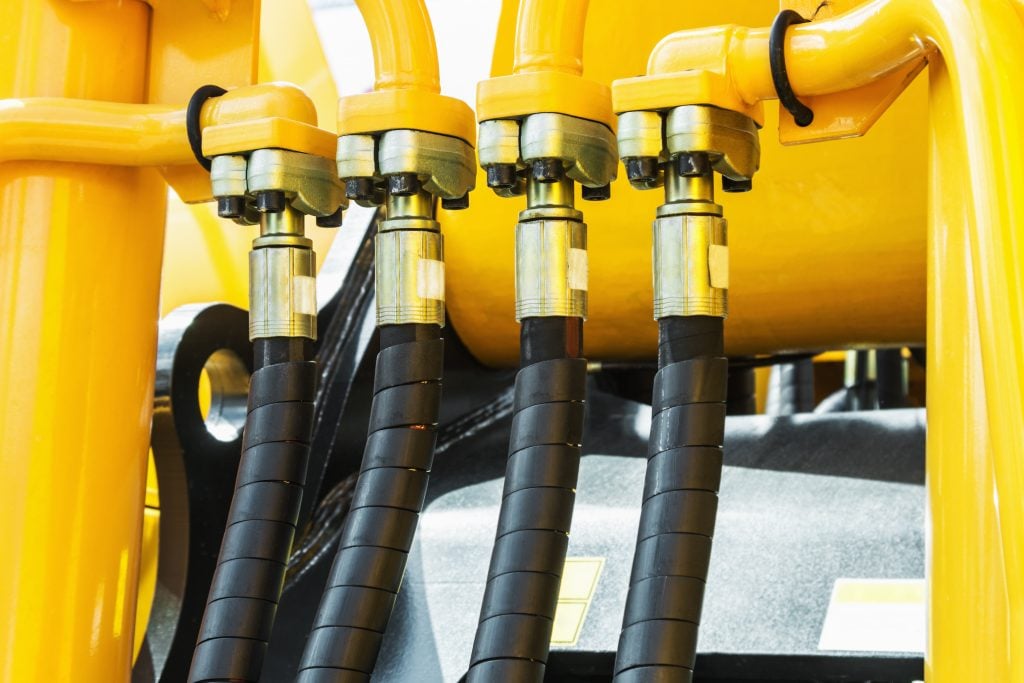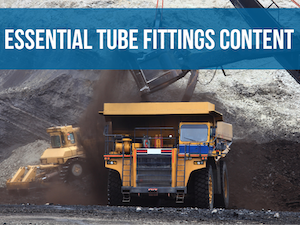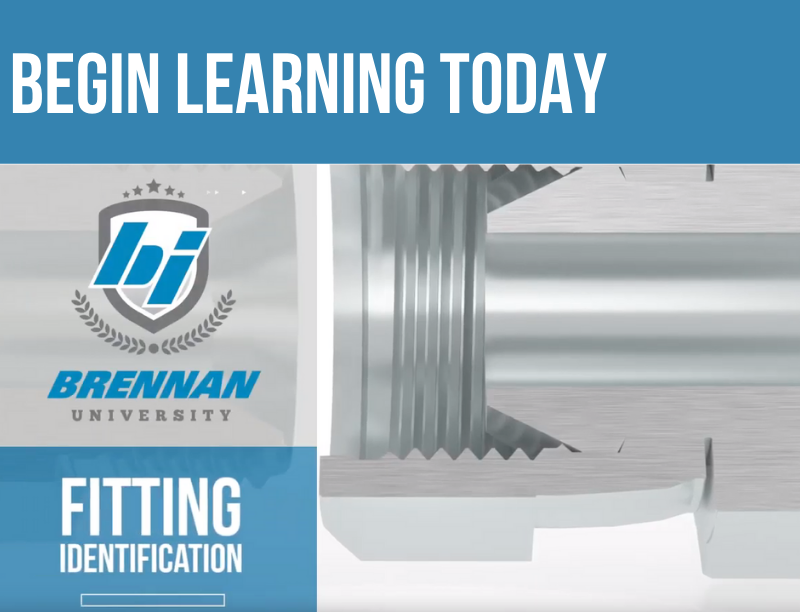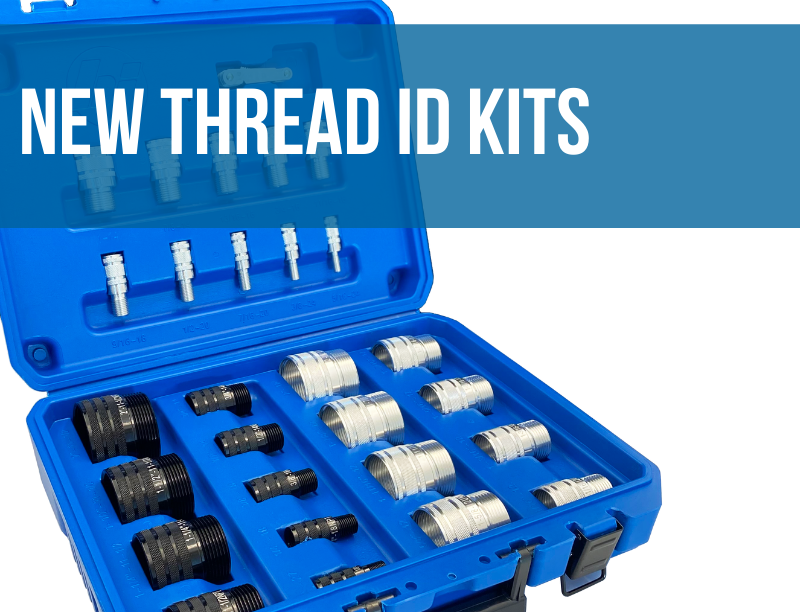For some applications, flanges are the only practical choice. They provide a leak-free connection and are often used in high pressure applications when using tubing or pipe. SAE Code 61 flanges are used in applications requiring working pressure of 500 to 5,000 PSI. Code 62 flanges are used for applications requiring working pressure of up to 6,000 PSI. It’s important to know that the two are not interchangeable so you don’t make costly, avoidable mistakes. It’s equally as important to know the characteristics of different
flanges in order to pick the proper one to fit
your needs.
DIN 4-Bolt Flange
The unthreaded female port in a DIN flange has 4 bolt holes around it in the corners. The male flanged head has holes to match the port and a grooved recess for an O-ring. The O-ring makes the seal between the flanged head and the flat surface on the port. Threaded bolts are inserted through the 4 bolt holes to securely connect the flange to another mating flange or the flat surface of the port.
TWO PRESSURE RATINGS FOR DIN 4-BOLT FLANGES
As shown in the tables below, Form R is very similar to SAE Code 61, where Form S is the heavy-duty series and is similar to SAE Code 62. Either metric or inch type bolts can be used in a DIN 4-Bolt flange. In addition, the DIN 20066 4-bolt flange is interchangeable with JIS B 8363 and SAE J518. Because of their interchangeability SAE J518, DIN 20066 and JIS B 8363 flanges are available in two pressure ratings. Code 61 is rated up to 3,000 PSI and the high pressure Code 62 series is rated up to 6,000 PSI in all sizes.

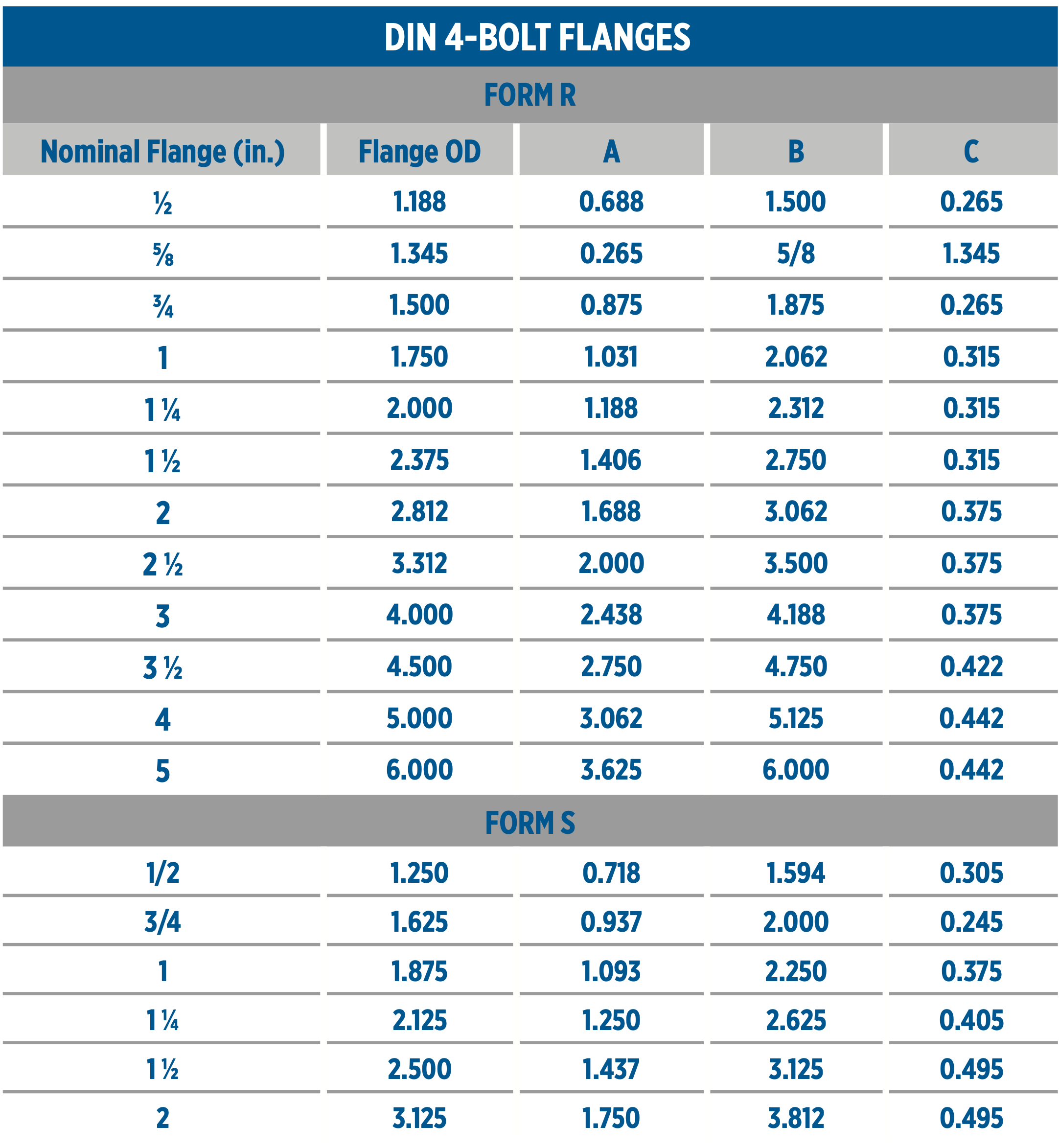
JIS 4-Bolt Flange
As with DIN flanges, the unthreaded female port in a JIS flange has 4 bolt holes at the corners. The male flanged head has holes to match the port and a grooved recess for an O-ring.
The O-ring makes the seal between the flanged head and the flat surface on the port. Threaded bolts are inserted through the 4 bolt holes to securely connect the flange to another mating flange or the flat surface of the port.
TWO PRESSURE RATINGS FOR JIS 4-BOLT FLANGES
Type 1 is similar in application to SAE Code 61. However, like SAE Code 62, Type 2 JIS 4-Bolt Flange is the heavy-duty series. Flange head diameters and bolt diameters are larger in the Type 2, and like DIN flanges, inch or metric bolts can be used. This JIS B 8363 flange is also interchangeable with both DIN 20066 and SAE J518.

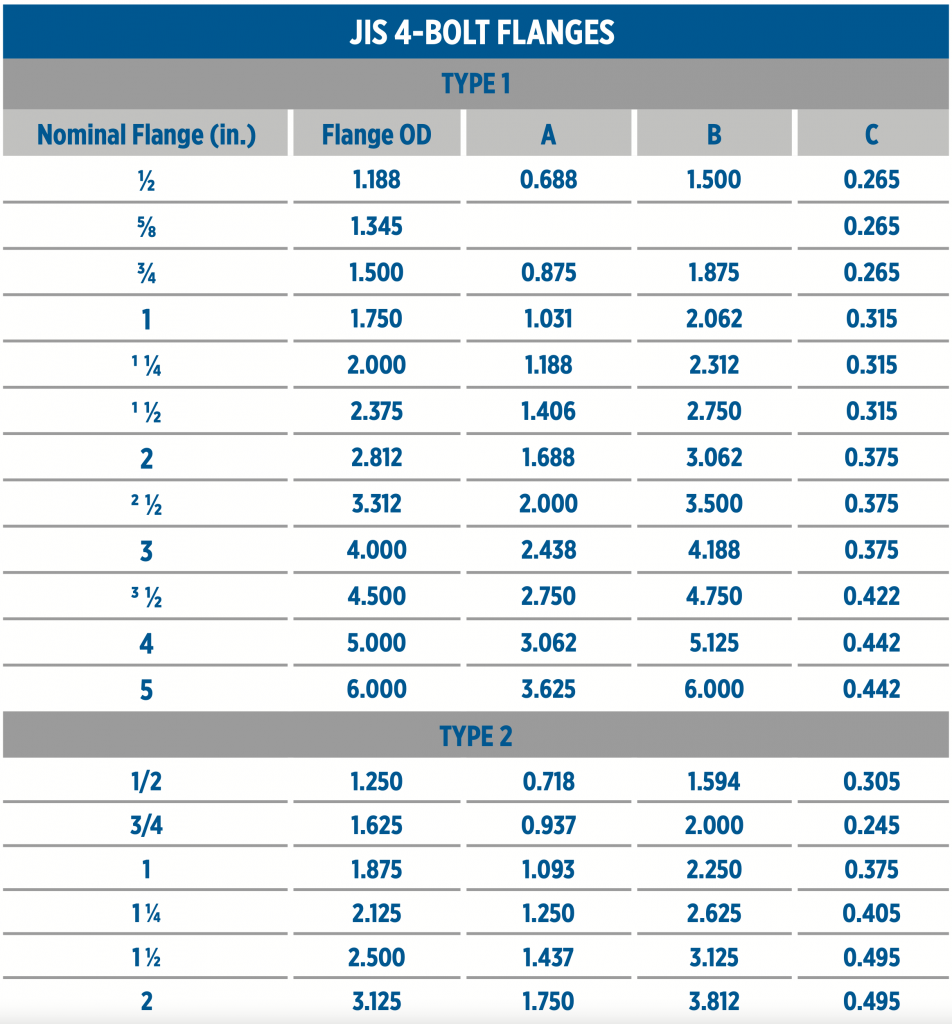
Komatsu® Flange Fitting
Komatsu Flange fittings are almost identical to the SAE Code 61 flange fittings and completely interchangeable. However the O-ring sizes are different. Therefore an SAE O-ring is to be used when substituting a Komatsu fitting with an SAE fitting.
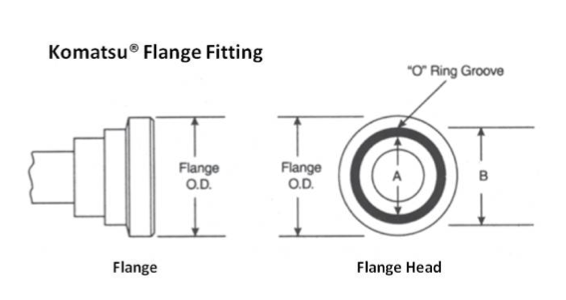
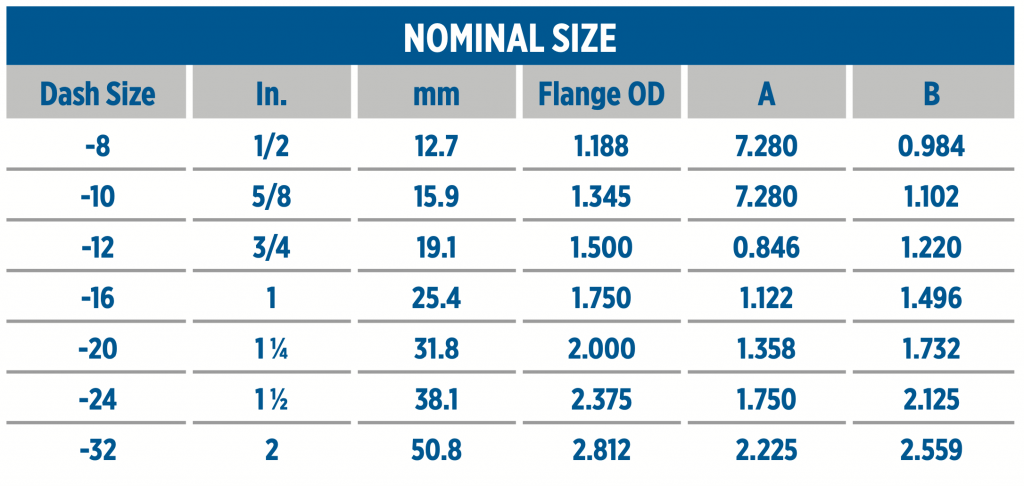
GAZ Poclain 24° Flange
Like Caterpillar in the U.S. and Komatsu in Japan, there is a French standard flange fitting known as the Poclain 24 flange.
The Poclain flange derives its name from the Poclain excavator company, founded by Georges Bataille in France in 1927 and was a leader on the world market because of its revolutionary hydraulic motor.
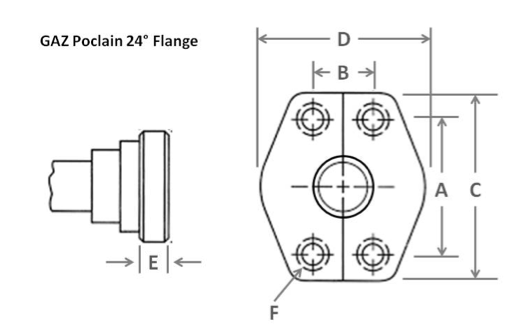
Today the Poclain Group is a major manufacturer of hydrostatic transmissions.
The GAZ Poclain 24° high pressure flange is typically found on Poclain equipment. And because their hydraulic motors are in such wide use throughout the world, it is important to understand the slight, but critical differences of the flanges.
Though French GAZ fittings have metric threads that are similar to the German DIN there are differences in the threads in many sizes. French GAZ Poclain flanges use fine threads in all sizes and have a lip that protrudes from the flange face that is different from SAE, Caterpillar and Komatsu flanges.
This flange is typically found on Poclain equipment. The 24° flange seat is different from an SAE due to a lip that protrudes from the face of the flange. The male flange seals with a female flange or port, with a 24° seat.

Code 61/Code 62 Caterpillar® Flange (SAE J518)
In referring to the various types of flanges used in the world markets, it is important to make the comparison to the Caterpillar Code 61 and 62 flange (SAE J518). As with other flanges, the female port hole on the Caterpillar flange is unthreaded with 4 bolt holes surrounding it at the corners. The male has a flanged head with an O-ring grove and with holes to match the port.
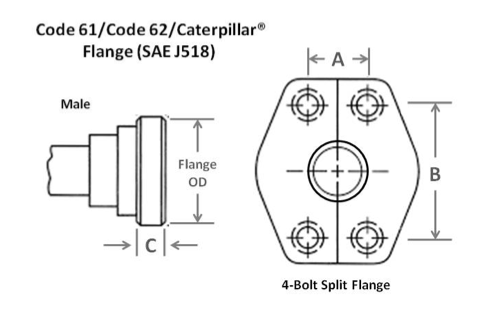
The O-ring seal is compressed between the flanged head and the flat surface around the port where bolts
hold the connection.
The Caterpillar flange is frequently used on pumps and motors in fluid power systems throughout the world market. The compatible fitting is available in two pressure ratings, depending on size Code 61 Form R Type 1 PN 35/350 bar can operate at pressures from 500–5000 PSI. Code 62 Form S PN 415 bar Type 2 is the heavy-duty style and operates up to 6000 PSI. The design is the same between flanges; however the flanged head diameters and bolt hole spacing are larger for high pressure Code 62 fittings.
As with other flanges there is interchangeability. The SAE J518, DIN 20066, ISO/ DIS 6162 and JIS B 8363 are interchangeable, except for the bolt sizes. Plus, the -10 is not available as an SAE standard size. Though Caterpillar flanges have the same flange OD as SAE Code 62, they incorporate a thicker flange head (note the “C” dimension in the table below).
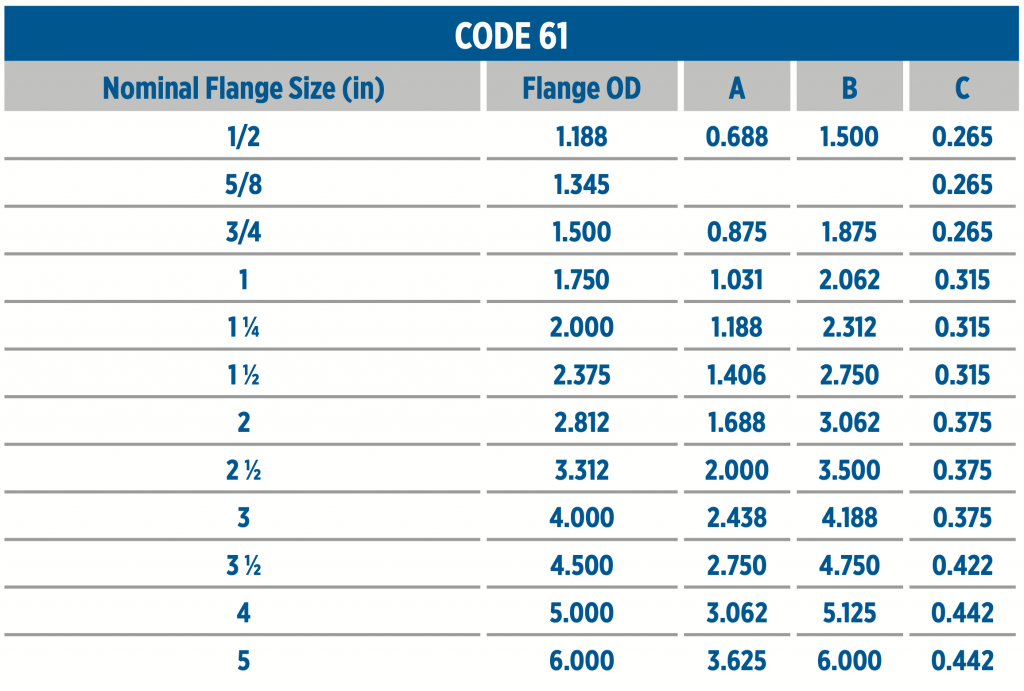
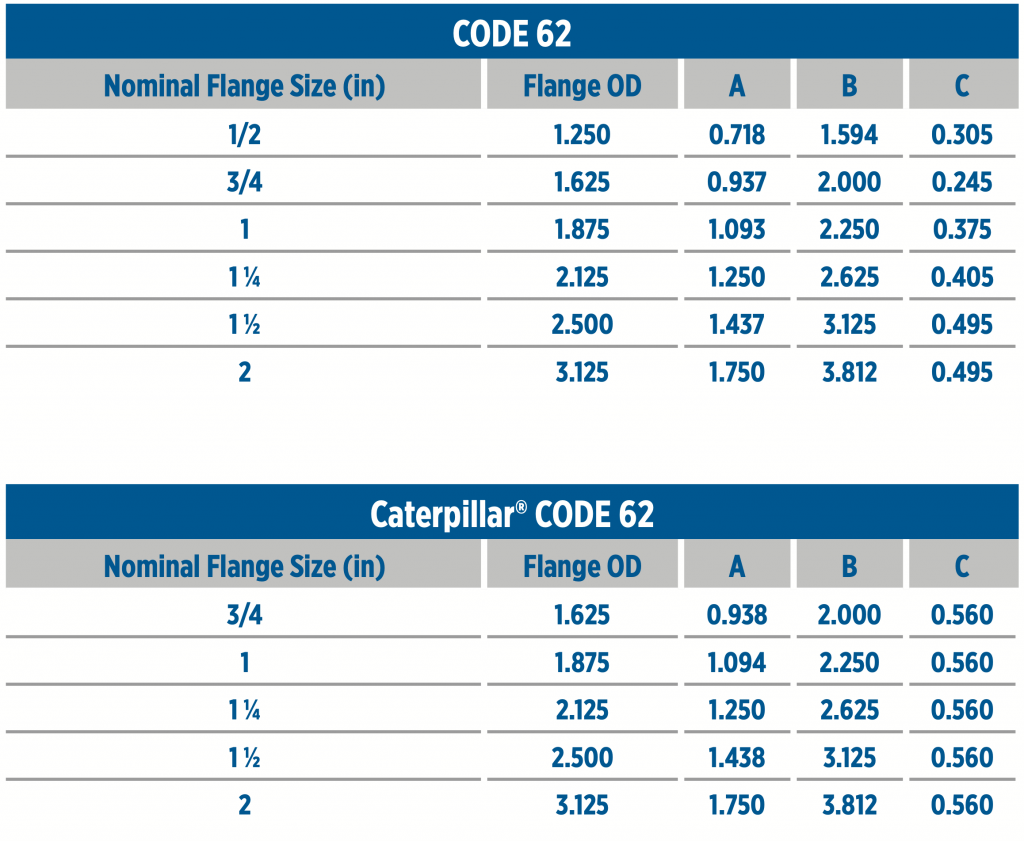
Conclusion
It’s important to remember that Code 61 and Code 62 flange styles are not interchangeable. When it comes to flange connections, interchangeability of 4-bolt flange fittings is convenient between DIN 20066, JIS B 8363 and SAE J518, with each available in two pressure ratings. Code 61 is rated up to 5,000 PSI and the high pressure Code 62 series is rated up to 6,000 PSI in all sizes. Knowing the different characteristics of flanges helps you make a better decision on which to include in your applications.
SOURCES:
Arthur Harris & Company
Hose Assembly Tips
Hydraulics & Pneumatics
Numeralkod
Poclain

